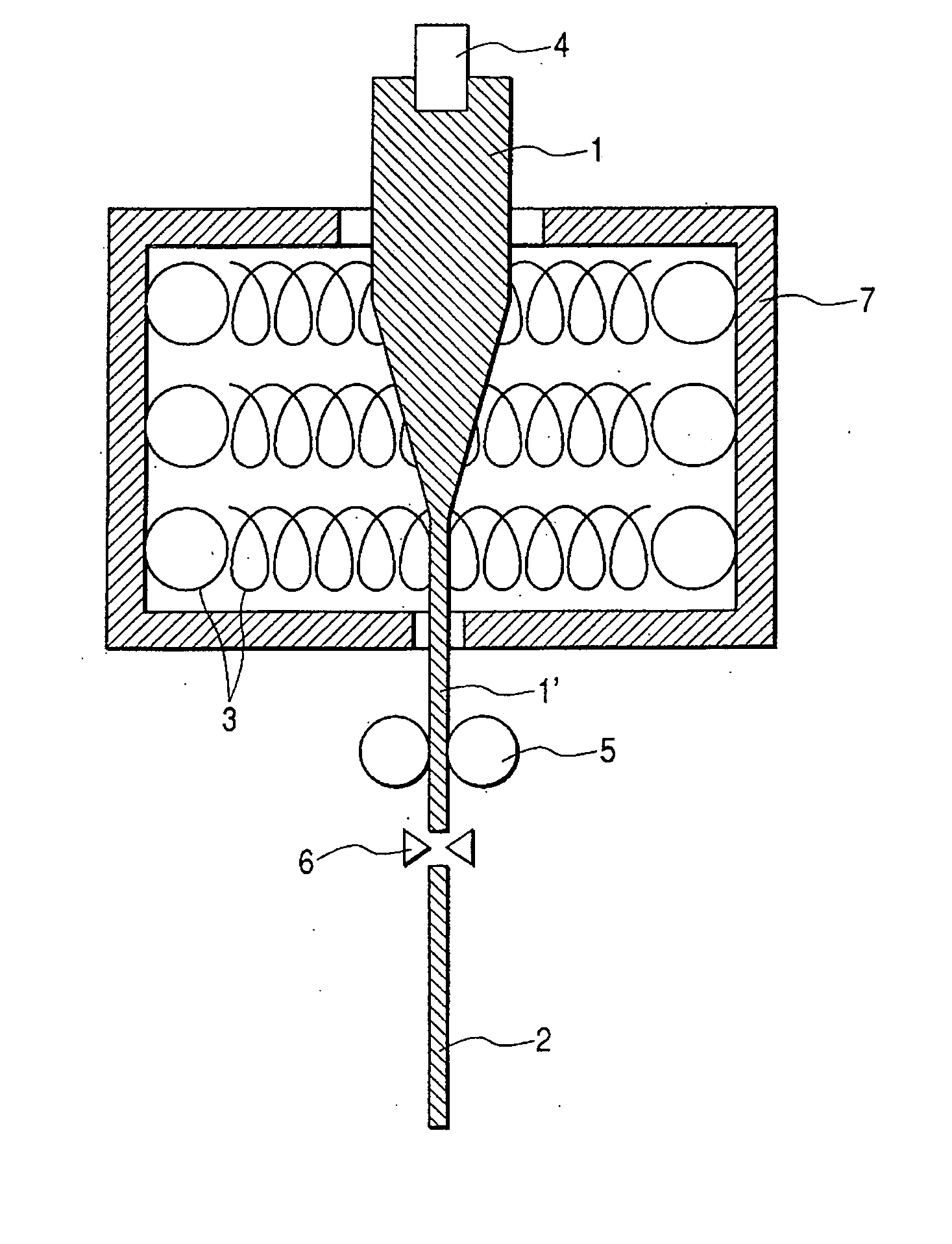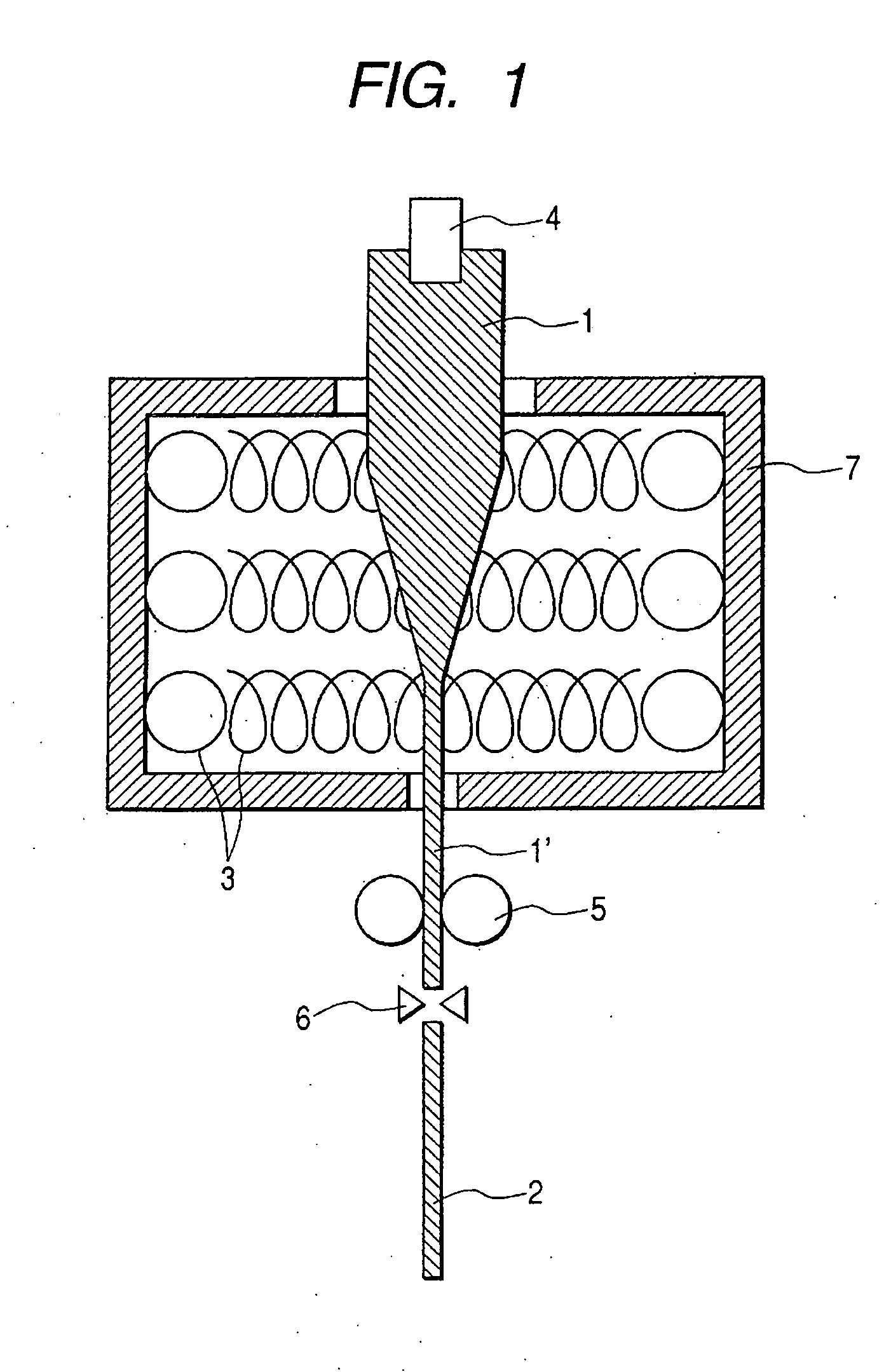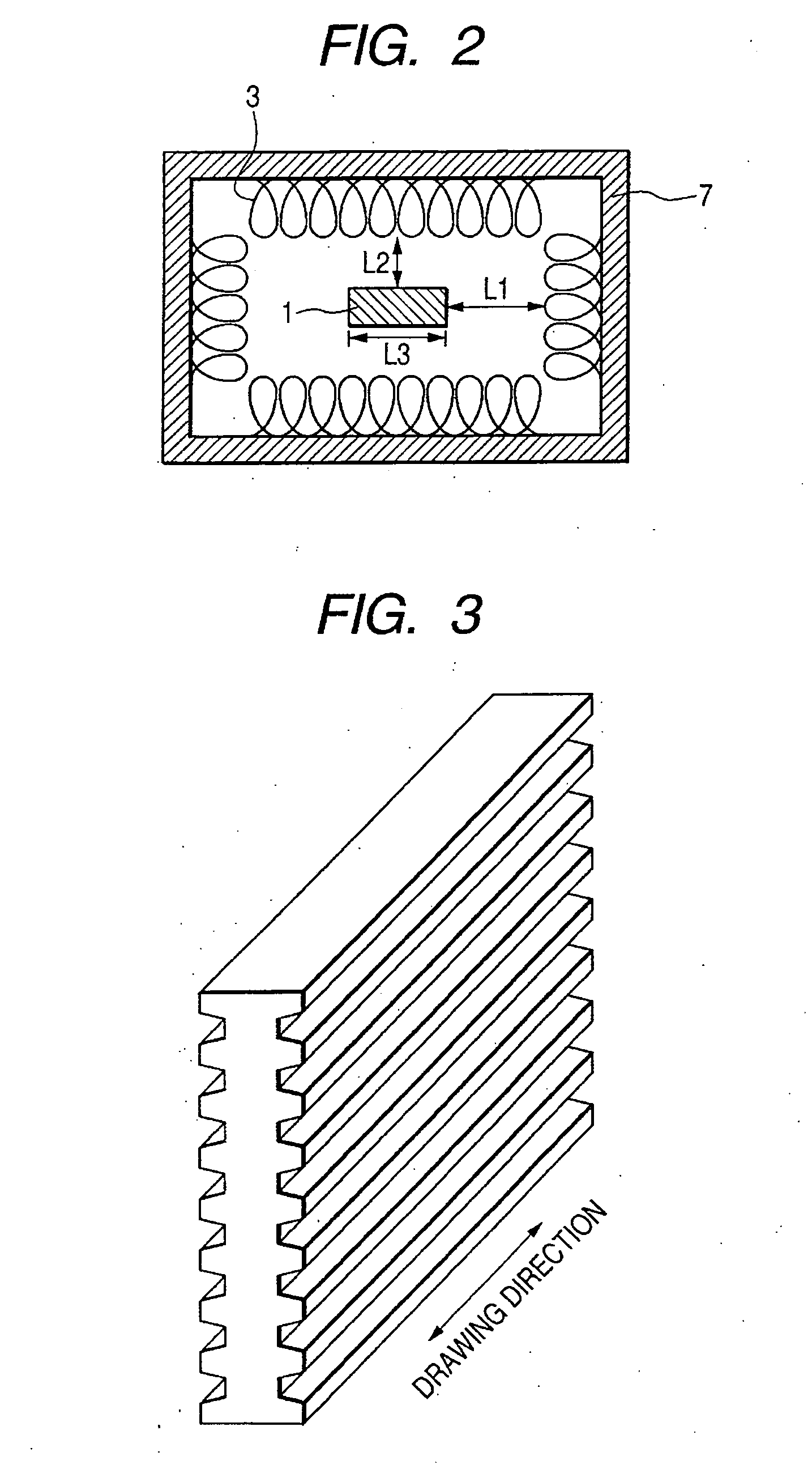Heating and drawing apparatus and method of manufacturing glass spacer using the same
a technology of drawing apparatus and glass spacer, which is applied in the manufacture of electrode systems, manufacturing tools, and manufacturing of electric discharge tubes/lamps, etc., can solve the problems of low stability and assembly efficiency of panels, distortion of displayed images, and hardly obtained support strength, etc., and achieve the effect of suppressing charging
- Summary
- Abstract
- Description
- Claims
- Application Information
AI Technical Summary
Benefits of technology
Problems solved by technology
Method used
Image
Examples
example 1
[0036] A glass base material having an oblong-rectangular section measuring 6.15 mm×49.23 mm and 40 trapezoidal grooves with a depth of 0.335 mm and a pitch of 0.923 mm on the surface was used. The heating and drawing apparatus shown in FIG. 1 was used. A heater 3 opposed to the longitudinal direction (49.23 mm) of the above section had a length of 130 mm, and a heater 3 opposed to the transverse direction (6.15 mm) of the section had a length of 86 mm. These heaters were each arranged at positions about 49 mm away from the surfaces of the glass base material. The centers in the longitudinal direction of the heaters 3 were aligned with each other in each direction. In other word, the base material is positioned with respect to the heaters in such a manner that the center of each side of the base material is aligned with the center of the side of the heater opposed to the side of the base material.
[0037]FIG. 8 shows the heat flux output of a 130 mm-long heater 3 which has heated the...
example 2
[0041] The same heating and drawing apparatus as that of Example 1 was used to manufacture a spacer 2 in the same manner as in Example 1 except that the viscosity of the glass base material was set to 107.6 P and 107.9 P by reducing the drawing temperature. As a result, a high-quality spacer was obtained as in Example 1 when drawing was carried out at these viscosities.
example 3
[0043] The same heating and drawing apparatus as that of Example 1 was used to manufacture a spacer 2 in the same manner as in Example 1 except that the viscosity of the glass base material was set to 107.1 P and 107.3 P by increasing the drawing temperature. Although the temperature of the glass base material could be made uniform at high accuracy in Example 3 as well, the drawing temperature was raised by increasing the temperatures of the heaters, thereby reducing the viscosity of the glass base material. This resulted in a variation in the depths of the grooves of about 3% for respective viscosities. However, the distortion of an image was not observed on a display employing this spacer, and high image quality could be obtained.
[0044] Examples of the present invention have been described above. In the above-described examples, the heater and the base material are arranged such that the center of the heater and the center of the base material are aligned with each other. The pre...
PUM
| Property | Measurement | Unit |
|---|---|---|
| viscosity | aaaaa | aaaaa |
| viscosity | aaaaa | aaaaa |
| viscosity | aaaaa | aaaaa |
Abstract
Description
Claims
Application Information
 Login to View More
Login to View More - R&D
- Intellectual Property
- Life Sciences
- Materials
- Tech Scout
- Unparalleled Data Quality
- Higher Quality Content
- 60% Fewer Hallucinations
Browse by: Latest US Patents, China's latest patents, Technical Efficacy Thesaurus, Application Domain, Technology Topic, Popular Technical Reports.
© 2025 PatSnap. All rights reserved.Legal|Privacy policy|Modern Slavery Act Transparency Statement|Sitemap|About US| Contact US: help@patsnap.com



